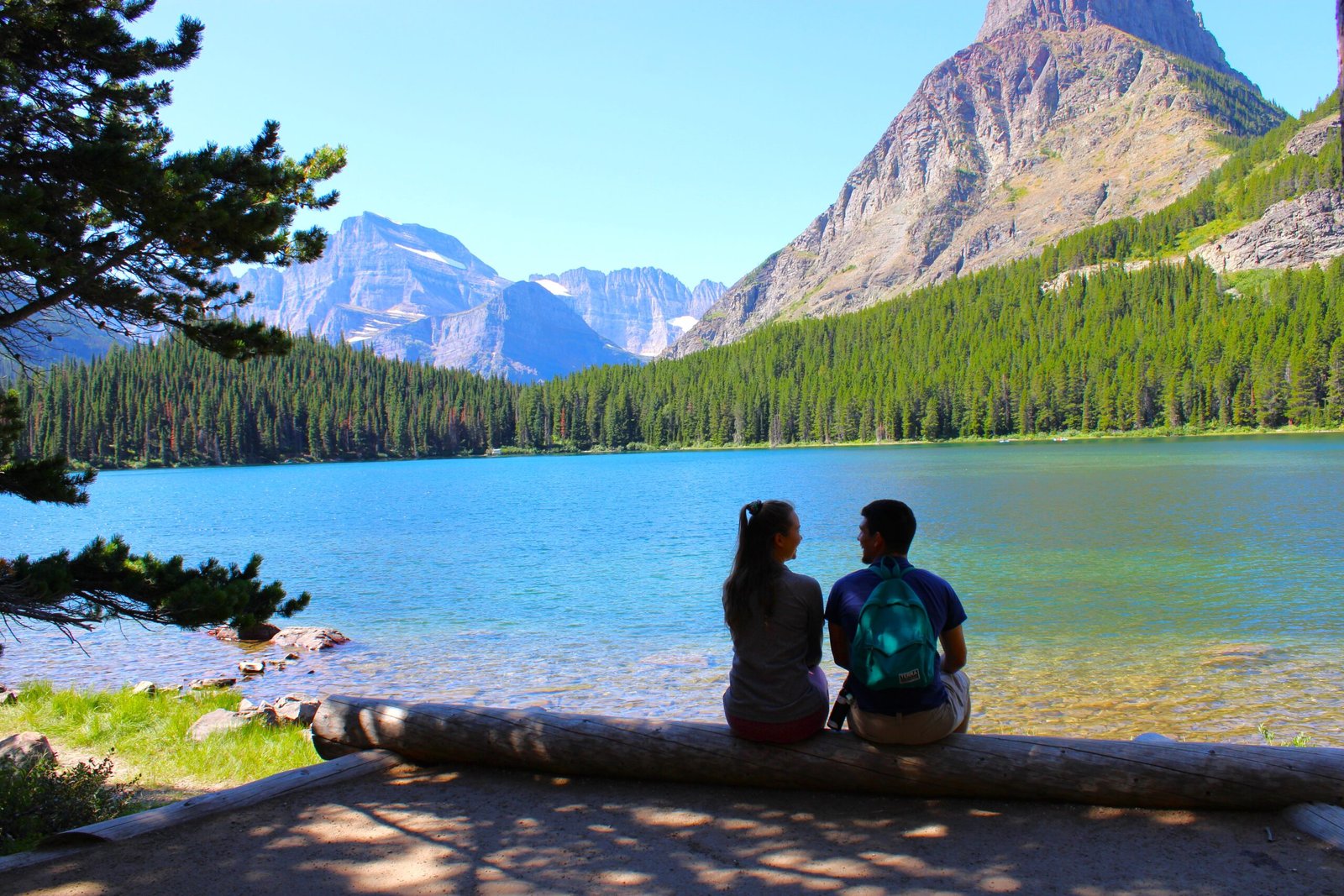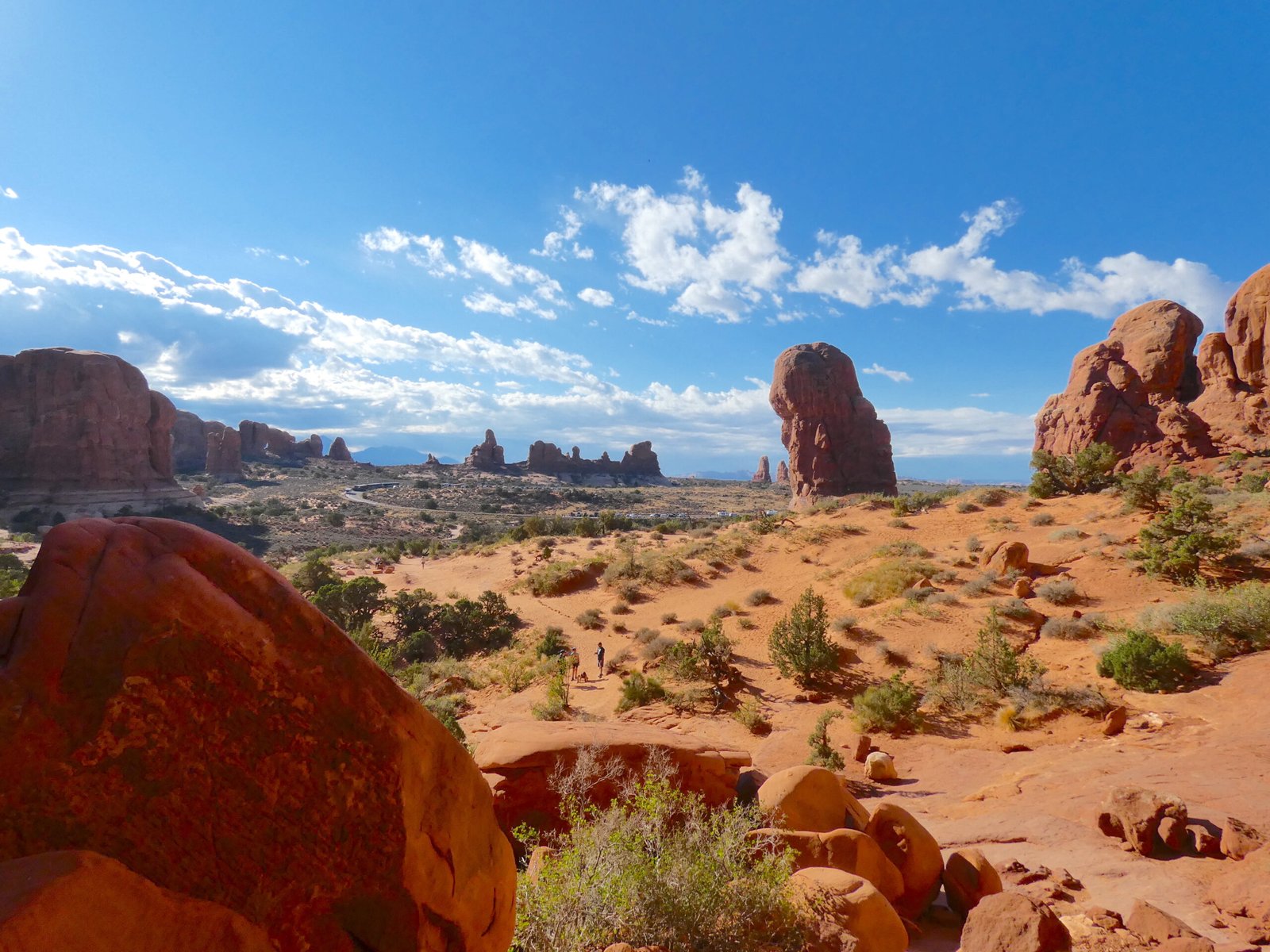Plan the perfect trip to Capitol Reef National Park with this complete travel guide. Featuring everything you need to know before you go, including things to do, best time to visit, what to bring + a one day itinerary.
After spending a week in Moab visiting Canyonlands and Arches National Park, we headed west toward Utah’s least visited National Park, Capitol Reef. We didn’t know what to expect from this park but we immediately fell in love with its towering rock walls, historic fruit orchards, and stunning sunset views.
We visited the Fruita Area of Capitol Reef during the month of September and the days were definitely sunny and warm. We stayed at Wonderland RV Park in the charming small town of Torrey and loved every minute of it. If you have just one day or a few days to spare, Capitol Reef National Park is totally worth a visit!
This post contains affiliate links, so we may earn a small commission when you make a purchase through links on our site at no additional cost to you.

ABOUT CAPITOL REEF
Capitol Reef is a 242,000 acre National Park located in South Central Utah. It was established in 1971 and is one of Utah’s Mighty 5 National Parks. The park is known for the Waterpocket Fold, a 100 mile wrinkle in the earth’s surface creating a diverse landscape of arches, cliffs, domes, and canyons. The park is separated into three areas. Fruita Historic District, Cathedral Valley, and South Waterpocket. The most accessible area of the park is the Fruita Historic District which features historic orchards, the Gifford House, tons of hiking trails, camping, and ranger programs.
ENTRANCE FEE
$20 per vehicle which is valid for 7 days. You can also use the America the Beautiful National Park pass to enter for free. Fees can be paid inside the visitor center.
PET POLICY
Pets must be leashed at all times and no longer than 6 feet in length. They are allowed on the Fruita Trail and Fremont River Trail, in unfenced or unlocked orchards, in picnic areas, campgrounds, and within 50ft of center line of roads open to public travel. They aren’t allowed on any other park trails.

GETTING TO CAPITOL REEF
Capitol Reef is located off Utah State Highway 24 in South Central Utah in between Bryce Canyon National Park and the popular outdoor town of Moab. The parks central location to Utah’s popular destinations make Capitol Reef a great stop to add on your road trip.
- Bryce Canyon – 2.5 hours or 120 miles
- Moab – 2.5 hours or 146 miles
- Zion – 3 hours or 180 miles
- Grand Junction – 3 hours or 186 miles
- Salt Lake City – 3.5 hours or 224 miles
- Las Vegas – 5 hours or 333 miles
NEAREST AIRPORTS
- Grand Junction Regional Airport in Grand Junction Colorado
- Cedar City Regional Airport in Cedar City Utah
- St. George Regional Airport in St. George Utah
- Salt Lake City International Airport in Salt Lake City Utah
- Harry Reid International Airport in Las Vegas.
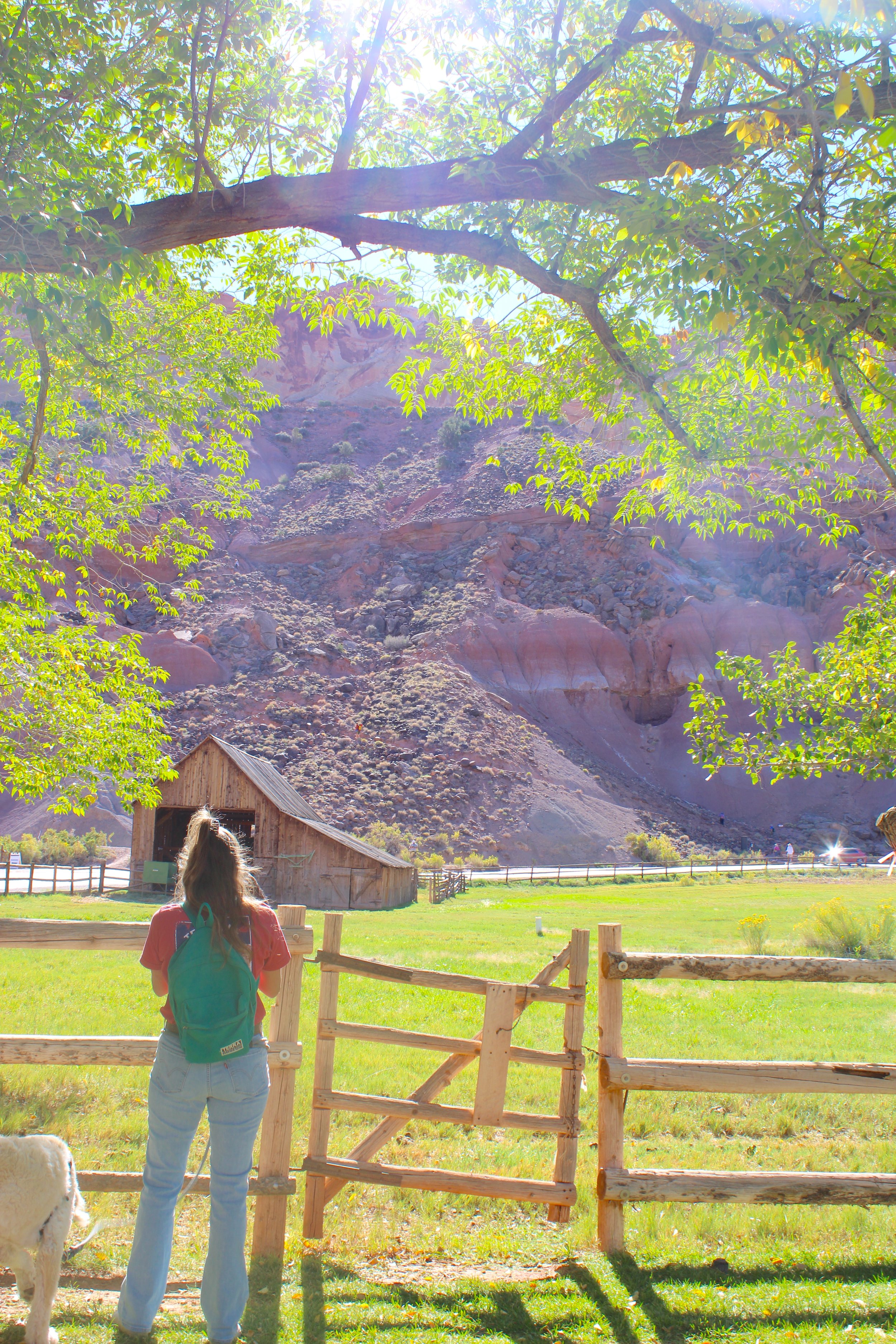
BEST TIME TO VISIT
Capitol Reef National Park is open all year long giving you the opportunity to see this park in a variety of ways. The busiest months are March to June and September to October for its ideal hiking and camping weather.
SPRING & SUMMER
Most ranger programs run spring through fall and include Geology Talk, Junior Ranger Program, and a variety of evening programs. In addition the Gifford House and Museum is open spring through fall. Monsoon season in Capitol Reef is mid June to mid October bringing heavy rain, thunderstorms, and flash floods. Less than half an inch of rainfall within an hour can cause a flash flood. Always check for current conditions before planning a trip.
FALL & WINTER
In addition to the colorful fall leaves you can experience at Capitol Reef, Heritage Starfest is a 2 day event in fall that celebrates the night sky in Capitol Reef. Visit their website for more information on the event. Winter brings fewer crowds and much colder days in Capitol Reef. Average highs are in the 40’s with lows hanging out in the 20’s. The park receives 3 or 4 inches of snow fall per month providing an experience like no other during these quieter days.
TIP | For less crowds, plan your visit during the week and start your day in the park early.
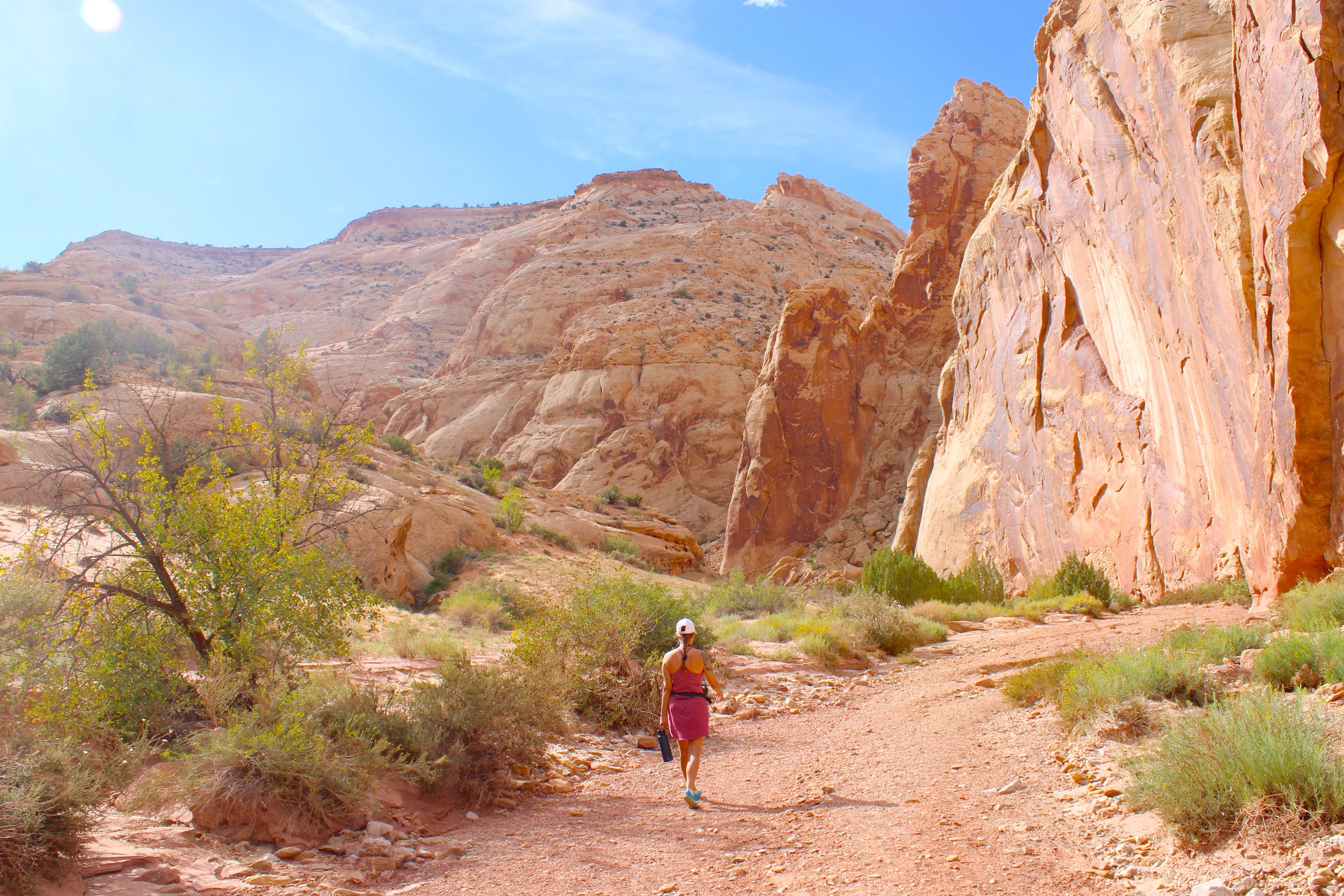
WHAT TO BRING
Plenty of Water
Capitol Reef National Park is high desert which means hot and dry especially in the summer. Be sure to pack extra water and stay hydrated while exploring. We love adding LMNT’s Electrolyte Packets to our Simple Modern Insulated Water Bottles to have ice cold water for the whole day.

Simple Modern Water Bottle with Straw Lid Vacuum Insulated Stainless Steel Metal Thermos Bottles | Reusable Leak Proof BPA-Free Flask for Gym, Travel, Sports | Summit Collection | 32oz, Blush
Hiking Shoes
While there are many easy paths to explore in Capitol Reef there are a few trails that are rocky, sandy, and steep. To have the most comfortable experience on the trails we recommend wearing a proper hiking shoe or boot to provide traction and support. Columbia Mens & Women’s Hiking Boots are a game changer.

Columbia Women’s Newton Ridge Plus Hiking Shoe, Elk, River Blue, 7
Sun Protectant
There is no shade on any trails in the park so it’s best to bring your favorite sunscreen and wear sun protectant clothing when exploring.

Libin Women’s Full Zip UPF 50+ Sun Protection Hoodie Jacket Long Sleeve Sun Shirt Hiking Outdoor Performance with Pockets Ice Blue M
Hiking Sticks
Montem Ultra Strong Hiking Poles have been a LIFE SAVER when exploring national parks. They’re helpful in giving you extra support as you climb up steep trails as well as coming down steep trails. They provide extra stability and we no longer hike without them.

Montem Ultra Strong Trekking, Walking, and Hiking Poles – One Pair (2 Poles) – Collapsible, Lightweight, Quick Locking, and Ultra Durable (Black Matte)
First Aid Kit
General Medi Mini First Aid Kit is a must have when exploring national parks. Cell service doesn’t really exist in the park so it’s good to be prepared in case of an emergency.

General Medi Mini First Aid Kit, 110 Piece Small First Aid Kit – Includes Emergency Foil Blanket, Scissors for Travel, Home, Office, Vehicle, Camping, Workplace & Outdoor (Red)
Lunch / Snacks
It is highly recommended to pick a lunch and snacks when visiting Capitol Reef. There aren’t many food options in the park, so it’s a good idea to pack a good lunch and plenty of snacks.

AMENITIES IN THE PARK
VISITOR CENTER
Open year round and a great place to start your adventure in Capitol Reef. Load up on info, pick up a park map, and get exploring.
Here you can also find water filling stations, restrooms, gift shop, museum exhibit, and permits for backcountry camping, canyoneering, and rock climbing. Hours and services vary by season so it’s best to check for current conditions before planning a trip. Wifi is also available here.
FRUITA CAMPGROUND
Open year round and the only developed campground inside Capitol Reef. The campground has 71 sites and is located 1 mile south of the National Park Visitor Center. Each site is dry camping, comes with a picnic table & grill/firepit, and can accommodate up to 8 people. Water fill station and dump station are available as well as restrooms. Group sites are also available. Cell signal is minimal.
Sites are $25 a night or $12.50 with a Golden Age/Senior Pass.
March 1 – October 31 sites are on a reservation system only.
November 1 – February 28 sites are on a first come first served basis.
Reservations can be made up to 6 months in advance at recreation.gov
TIP | Showers are available in Torrey at Chuck Wagon General Store from March to October.

TOWNS NEARBY
TORREY
Located 11 miles from the entrance and is known as the Gateway to Capitol Reef National Park. It was established in 1880 by Mormon settlers and was originally known as Youngtown. The town sits at 6,700 feet and has a population of 182.
LODGING
- Capitol Reef Resort
- Red Sands Hotel & Spa
- Noor Hotel of Capitol Reef
- Skyridge Inn Bed & Breakfast
- Broken Spur Inn & Steakhouse
- Days Inn by Wyndham Torrey
- The Cabins at Capitol Reef
- Cougar Ridge
- Torrey Schoolhouse B&B Inn
- Torrey Trading Post
RV PARKS
- Wonderland RV Park
- Thousand Lakes RV Park
- Sand Creek RV Park
FOOD
- La Cueva Restaurante Mexicano
- The Pioneer Kitchen
- Rim Rock Patio
- Subway
- The Rock Garden Eatery & Bar
- Capitol Burger
- The Wild Rabbit Cafe
- Hunt & Gather Restaurant
- Chak Balm Mexican Restaurant
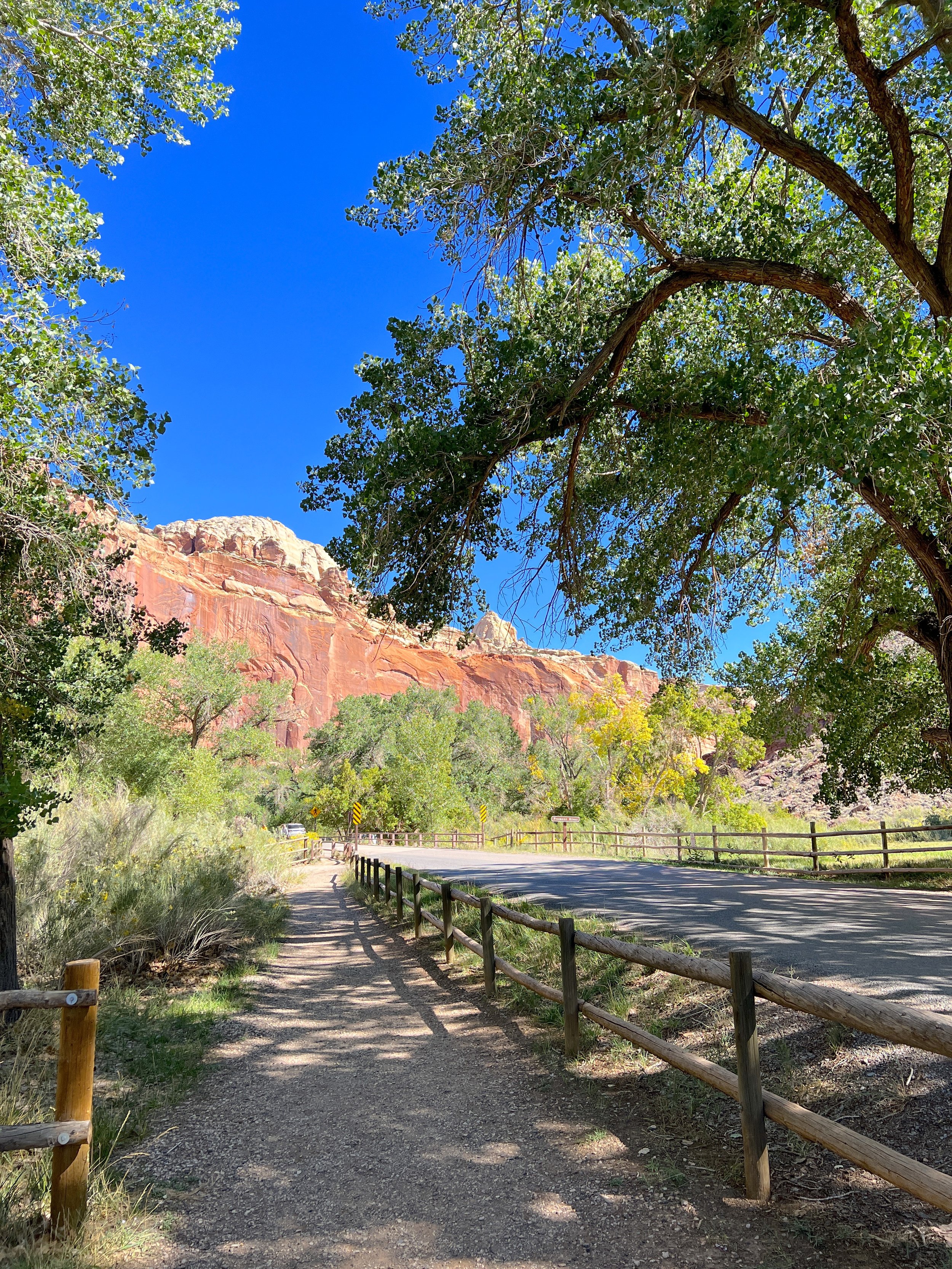
TOP THINGS TO DO
VISITOR CENTER EXHIBIT & STORE
Start your exploration of Capitol Reef at the Visitor Center. Grab a park map and check out the park movie to learn about the history and geology of Capitol Reef. Stop at the restroom and get the latest scoop from the park ranger. Don’t forget to pick up a souvenir at the park store.

8 MILE SCENIC DRIVE
The 8 mile scenic loop drive gives you a taste of what Capitol Reef has to offer. Along the drive is where you will find some of the parks main attractions, scenic viewpoints, and hiking trails. Also featured is the Grand Wash and Capitol Gorge dirt roads to explore. These roads are typically suitable for passenger cars and RVs up to 27 feet in length. But as usual, check for current conditions before embarking in the park. The drive takes about 2 hours to complete so you can definitely see most of it in one day if that’s all you have.

THE GIFFORD HOUSE & MUSEUM
The Gifford House is one of the most popular spots to visit in Capitol Reef National Park. It was built in 1908 and showcases pioneer history as well as local hand crafted items, such as, books, jams & jellies, and fresh baked pie. They even have vegan pies available. The house is open spring through fall.
TIP | Pies usually sell out early in the day so make sure this one of your first stops in the park.

GET ON A TRAIL
A great way to explore the incredible nature of Capitol Reef National Park. Whether it’s an easy riverside stroll or a challenging day hike, Capitol Reef has something for everyone. The most popular in the park are, Cassidy Arch, Grand Wash, and Hickman Bridge.
For easy trails consider | Goosenecks Overlook, Sunset Point, Capitol Gorge, or Grand Wash.
For moderate trails consider | Cohan Canyon, Fremont River, Hickman Bridge.
For more strenuous trails consider | Cassidy Arch, Chimney Rock, Fremont Gorge Overlook, Frying Pan, Golden Throne, Old Wagon, Rim Overlook, Navajo Knobs.
TIP | Pack plenty of water and always check the weather before hiking in Capitol Reef.

PETROGLYPH PANEL
Located off Utah State Highway 24, Petroglyph Panel is one of the most popular family friendly things to do in Capitol Reef National Park. Visitors can view bighorn sheep, anthropomorphic ( human like), and other geometric shaped petroglyphs created on Wingate sandstone.
TIP | Some petroglyphs can be hard to see so bringing a pair of binoculars would be a good idea.
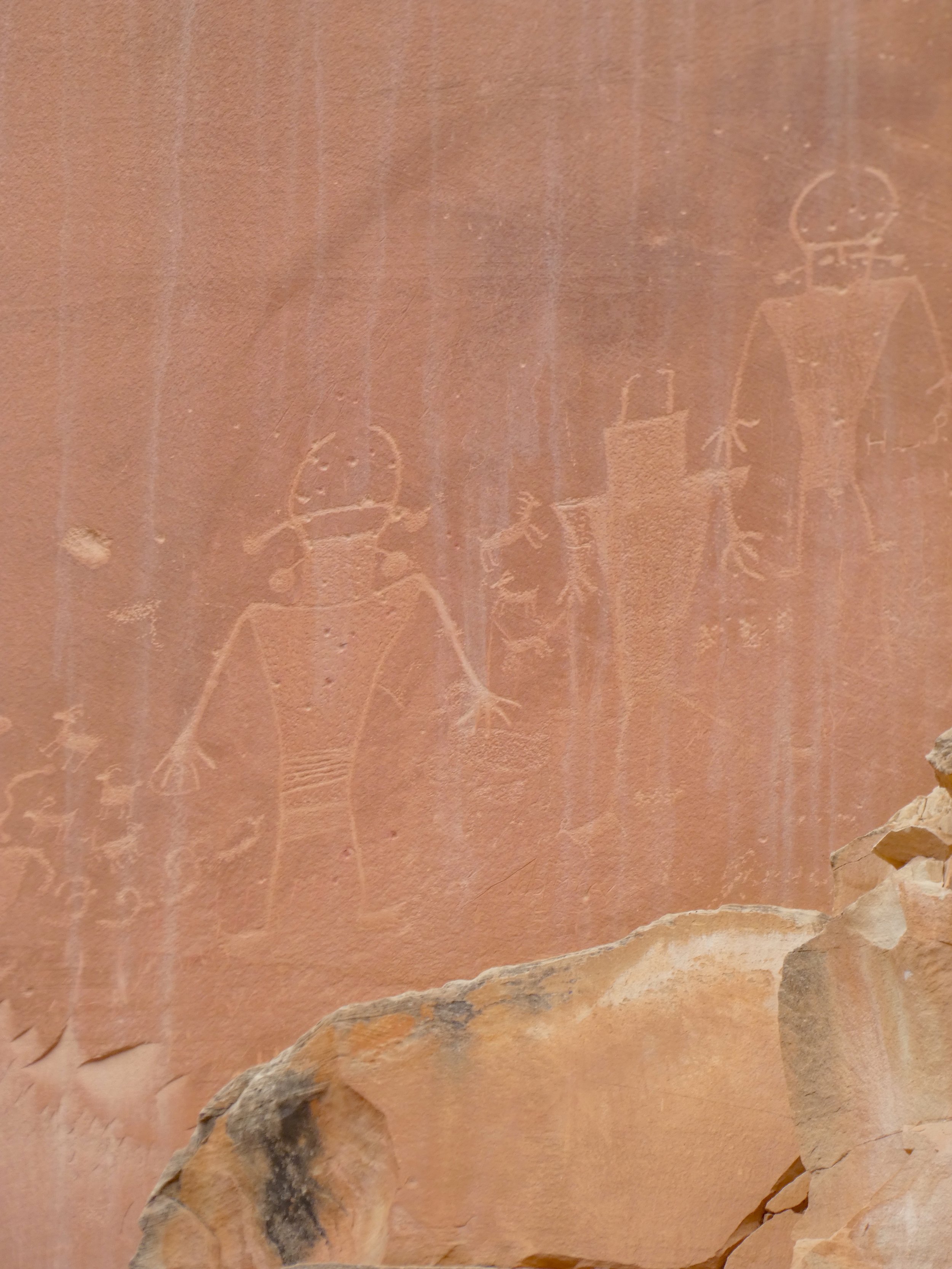
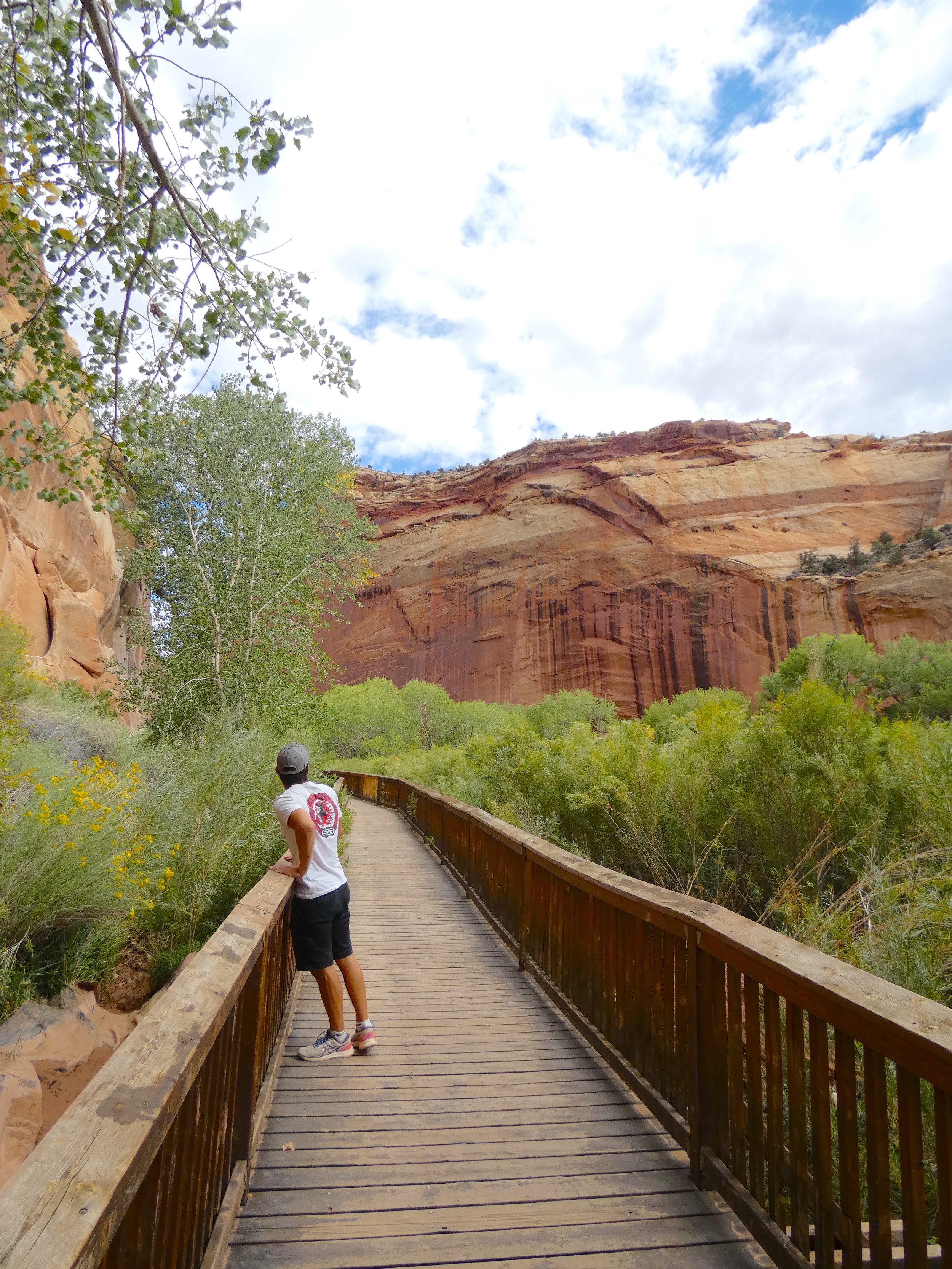
SUNSET POINT
No day in a National Park is complete without a sunset. For a truly colorful sunset take the short 0.4 mile walk up to Sunset Point. Get there 1 hour before sunset to see the color changes. We recommend wearing good shoes as the trail has a lot of loose rock. Dogs aren’t allowed unfortunately.
TIP | Another great spot right next to Sunset Point is the Goosenecks Overlook.

THE CASTLE
The Castle is one of Capitol Reef’s most iconic monuments. It can be found at the entrance to the park and features a geological timeline of 200 million year old Wingate sandstone from the late triassic period atop 230 million year old Grey Chinle from upper triassic period and 240 million year old Red Moenkopi from the lower triassic period. We think it also looks like birthday candles.

THE ORCHARDS
The nearly 2,000 orchards featured in Capitol Reef National Park were originally planted in the 1880s to provide food and income to the Latter Day Saint Pioneers that lived in the Fremont River Valley. Apple, peach, cherry, pear, plum, and apricot are a few of the trees found on property. During harvest season, visitors can pick their own fruit right from the tree. Check the park website for updated harvest times. Leashed pets are welcome to join as well.
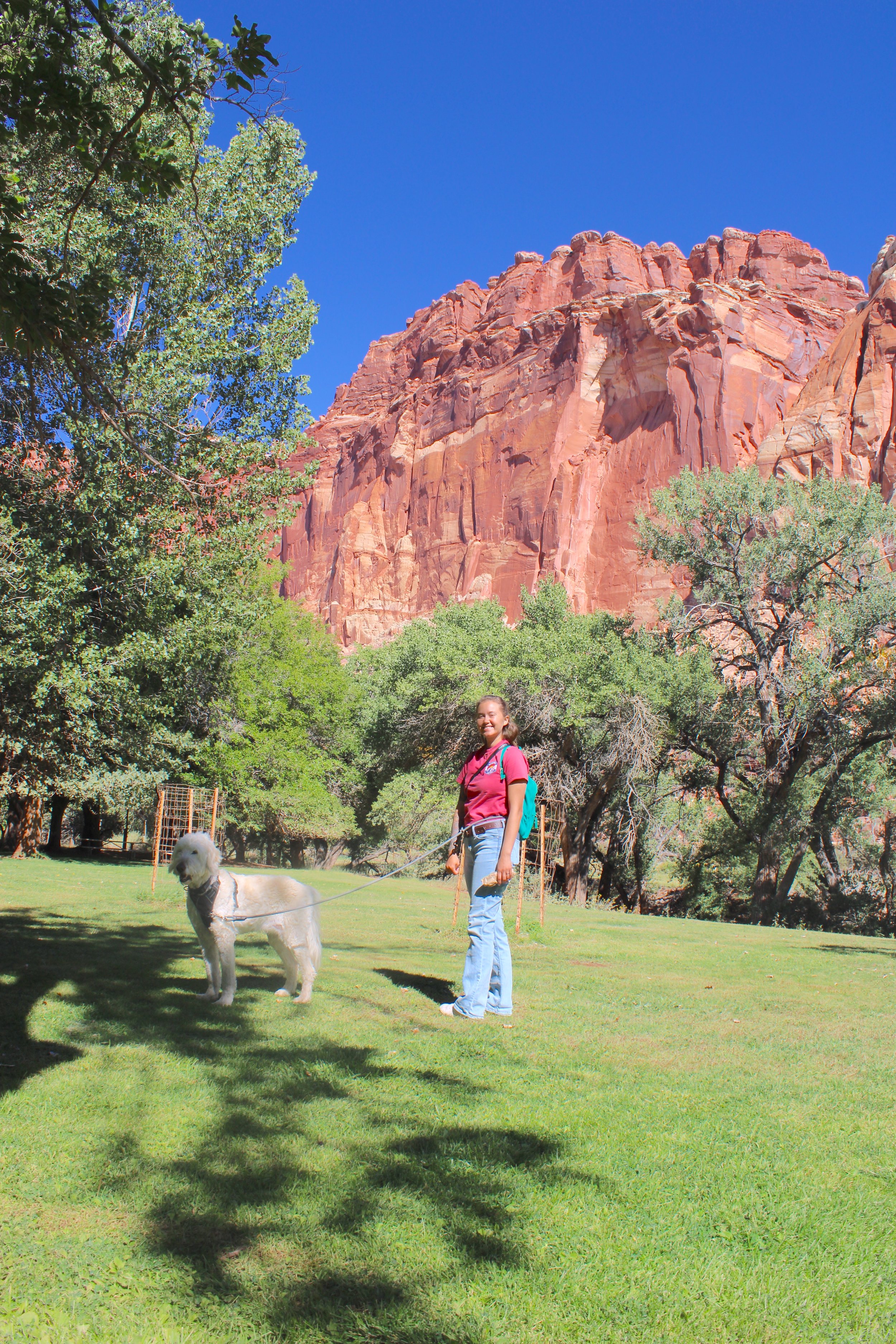
FRUITA SCHOOLHOUSE
The Fruita Schoolhouse gives a glimpse of what education in Capitol Reef was like during the late 1800s. The school was built in 1896 and its first teacher was just 12 years old. She taught 22 students that lived in the area grew to earn $70 per month. Classes continued until 1941.
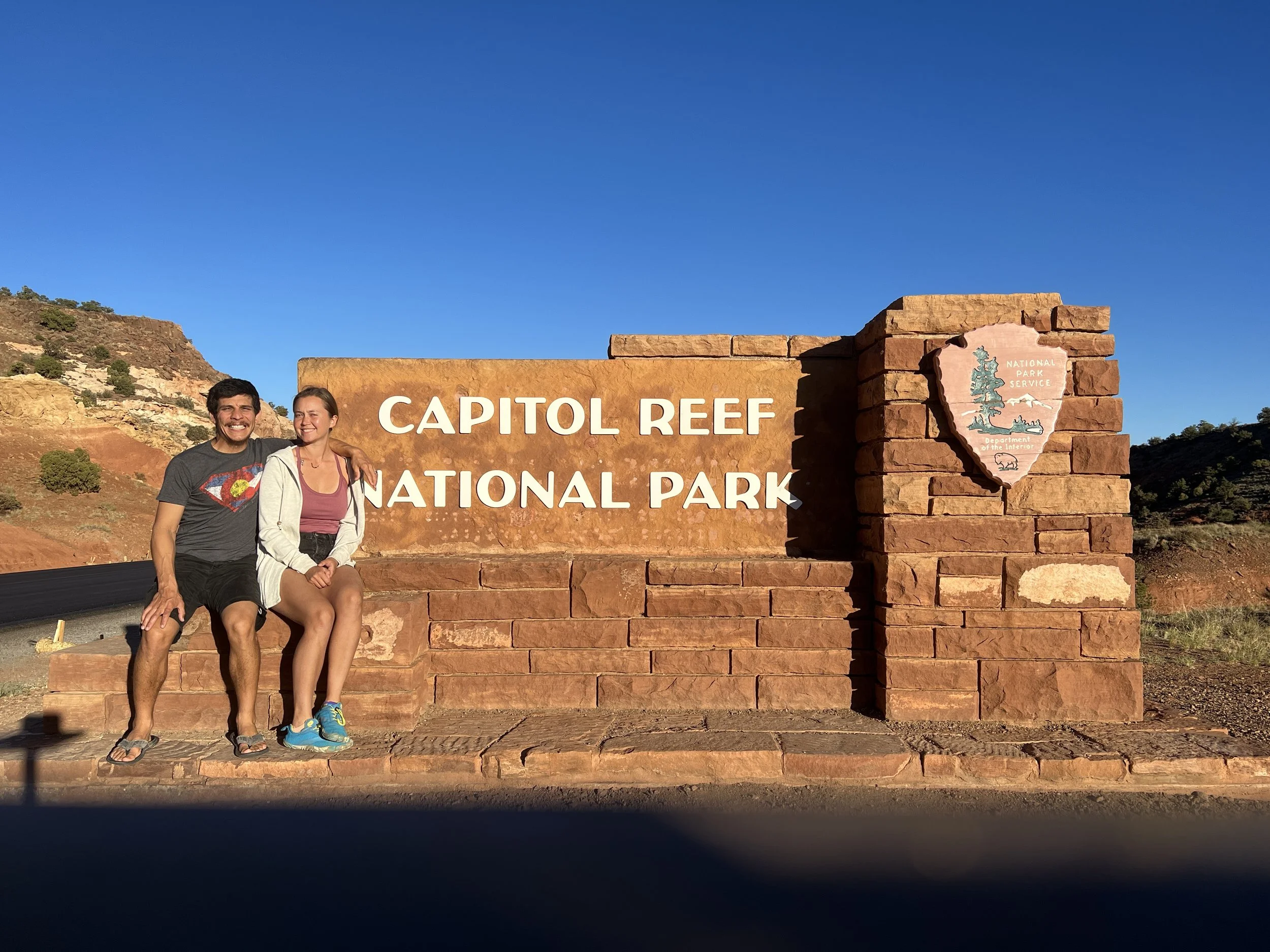
ONE DAY ITINERARY
STOP 1. Stop at the visitor center & secure a campsite (if visiting in off season).
STOP 2. Grab a pie at the Gifford house & check out the Orchards.
STOP 3. Take the scenic drive.
STOP 4. Take a hike such as Cassidy Arch or Hickman Bridge.
STOP 5. Head over to Petroglyph Panel & Fruita School House.
STOP 6. Walk through the Grand Wash.
STOP 7. Sunset at Sunset Point.
Let us know what are your favorite things to do at Capitol Reef National Park in the comments below!


